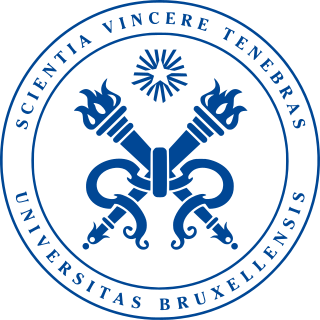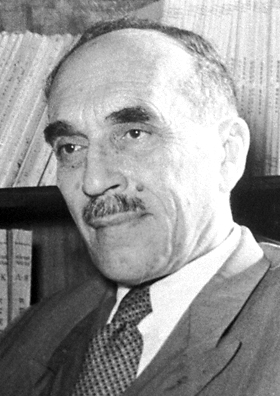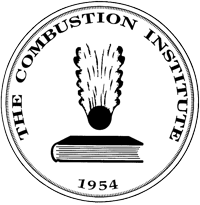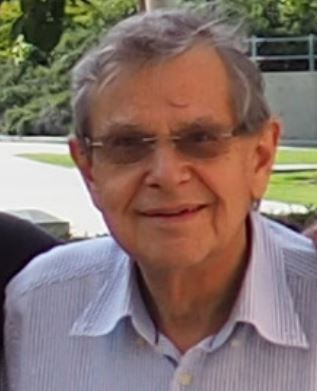Related Research Articles

Harold Eugene "Doc" Edgerton, also known as Papa Flash, was an American scientist and researcher, a professor of electrical engineering at the Massachusetts Institute of Technology. He is largely credited with transforming the stroboscope from an obscure laboratory instrument into a common device. He also was deeply involved with the development of sonar and deep-sea photography, and his equipment was used in collaboration with Jacques Cousteau in searches for shipwrecks and even the Loch Ness Monster.

Alexander Mikhailovich Prokhorov was a Russian physicist and researcher on lasers and masers in the former Soviet Union for which he shared the Nobel Prize in Physics in 1964 with Charles Hard Townes and Nikolay Basov.

Roger Tory Peterson was an American naturalist, conservationist, citizen scientist ornithologist, artist and illustrator, educator, and a founder of the 20th-century environmental movement, where he was an inspiration for many.

The Université libre de Bruxelles is a French-speaking research university in Brussels, Belgium. ULB is one of the two institutions tracing their origins to the Free University of Brussels, founded in 1834 by the lawyer and liberal politician Pierre-Théodore Verhaegen.

Nikolay Nikolayevich Semyonov , sometimes Semenov, Semionov or Semenoff was a Soviet physicist and chemist. Semyonov was awarded the 1956 Nobel Prize in Chemistry for his work on the mechanism of chemical transformation.

Philippe Kieffer, capitaine de frégate in the French Navy, was a French officer and political personality, and a hero of the Free French Forces.

Sir Gilbert Edward Archey was a New Zealand zoologist, ethnologist, World War I officer, and museum director. He wrote one of the major works on the moa, based on his own field work and collection. He also published numerous articles and described many new animal species.
Ralph Edward Gomory is an American applied mathematician and executive. Gomory worked at IBM as a researcher and later as an executive. During that time, his research led to the creation of new areas of applied mathematics.

Manson Benedict was an American nuclear engineer and a professor of nuclear engineering at the Massachusetts Institute of Technology (MIT). From 1958 to 1968, he was the chairman of the advisory committee to the U.S. Atomic Energy Commission.

Lewis Buckley Stillwell was an American electrical engineer and the president of American Institute of Electrical Engineers (AIEE) from 1909 to 1910. He received the AIEE Lamme Medal (1933) and the AIEE Edison Medal (1935), for "his distinguished engineering achievements and his pioneer work in the generation, distribution, and utilization of electric energy." He also was inducted into the IEEE's Electrical Engineering Hall of Fame. His papers (1886-1939) are held in the Manuscript Division of the Princeton University Library. In 1898, he was elected to the American Philosophical Society. He was elected as a member of the National Academy of Sciences in 1921.

William Embry Wrather was an American petroleum and economic geologist who served in various administrative roles including as director of the U.S. Geological Survey (USGS). He was awarded the John Fritz Medal in 1954.

The Combustion Institute is an educational non-profit, international, scientific and engineering society whose purpose is to promote research in combustion science. The institute was established in 1954, and its headquarters are in Pittsburgh, Pennsylvania, United States. The current president of The Combustion Institute is Philippe Dagaut (2021-).

Sir Harshad"Harry"Kumar Dharamshi Hansraj Bhadeshia is an Indian-British metallurgist and Emeritus Tata Steel Professor of Metallurgy at the University of Cambridge. In 2022 he joined Queen Mary University of London as Professor of Metallurgy.

Henry Marion Howe was an American metallurgist, the son of Samuel Gridley Howe and Julia Ward Howe.
Rem Ivanovich Soloukhin was a Soviet scientist, specializing in physics and mechanics. Along with Antoni K. Oppenheim (Berkeley) and Numa Manson (Paris), he founded the International Committee on Gasdynamics of Explosions and Reactive Systems (ICDERS) in 1967.
Nicholas Monroe Smith Jr. was a nuclear physicist and research consultant. Smith was an expert on reactor physics, a developer of operations research/computer modeling, and a computer applications consultant. He had ties to the Manhattan Project at Chicago and Oak Ridge, and worked with Samuel Allison and James Van Allen. Smith was a pioneer in the field of operations research.

Forman Arthur Williams is an American academic in the field of combustion and aerospace engineering who is Emeritus Professor of Mechanical and Aerospace Engineering at the University of California San Diego.
Moshe Matalon is an Israeli-American mechanical engineer and applied mathematician, currently the Caterpillar Distinguished Professor at University of Illinois at Urbana–Champaign.
Paul Clavin is a French scientist at Aix-Marseille University, working in the field of combustion and statistical mechanics. He is the founder of Institute for Research on Nonequilibrium Phenomena (IRPHE).
Graham "Peepsight" Smith † was an U.S. Army Air Force officer and combat fighter pilot with the 332nd Fighter Group's 99th Fighter Squadron, best known as the Tuskegee Airmen. He was a member of Tuskegee Airmen's fourth-ever aviation cadet program and one of the 1,007 documented Tuskegee Airmen Pilots.
References
- ↑ http://www.icders.org/ICDERS2007/abstracts/ICDERS2007-0131.pdf
- ↑ Murray, S. B. (2008-09-01). "Numa Manson on velocity deficits and detonation stability". Shock Waves. 18 (4): 255–268. doi:10.1007/s00193-008-0128-z. ISSN 1432-2153.
- ↑ "History of ICDERS". www.icders.org. Retrieved 2024-06-20.
- ↑ "Awards". www.icders.org. Retrieved 2024-06-20.
- ↑ "matchID - Moteur de recherche des décès". deces.matchid.io. Retrieved 2024-06-20.
- ↑ https://library.ucsd.edu/dc/object/bb7953568g